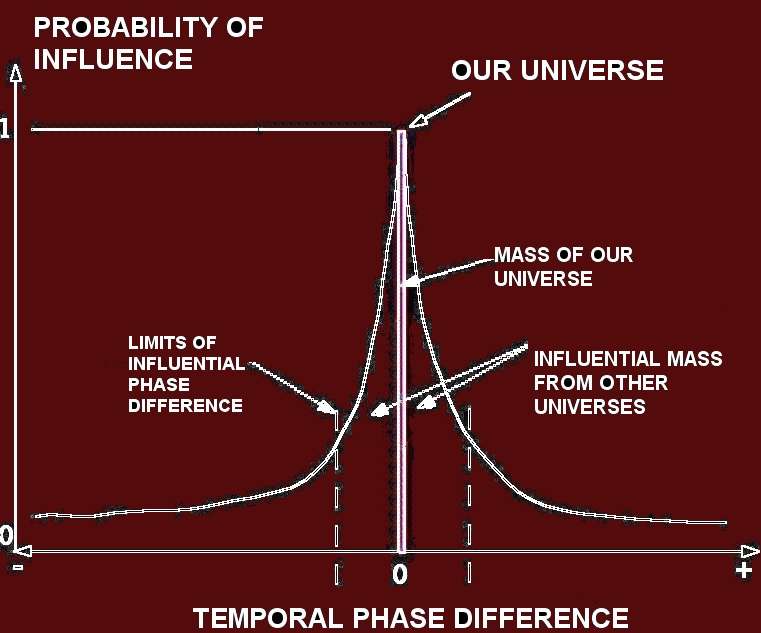Meshing Universes

The Mesh Theory
proposes that our universe
was formed or changed when two or more parallel universes meshed
together forming
the
dimensions that we experience now. There may have 'Big Bang' at
the birth of the universe but
it is just as likely it began in a more silent 'Big Mesh' of spatial
and temporal dimensions. However, the meshing may have occurred later
than the birth of our universe which will become more obvious if images
of the edge of our universe show discrepencies in relative recession
rate.
Parallel universe also provides an
explanation for the effect of dark matter and energy (1) (2). The
double-slit photon experiment (3) (4) (6) supports this idea that two
(or more)
universes can exist side-by-side and influence each other at a material
and energy level and that the presence of a parallel universe is also
likely to be influencing our universe at the atomic level (8).
Parallel Meshing Universes
 The
concept of parallel universes is not new and other universes could
begin at or near the same moment as ours. When the beginning is
defined by the realms of quantum physics, there is a probability that
other universes began together with similar dimensions but
dimensionally out of phase yet still meshed spatially with our
universe. The phase difference considered here would be determined by
the difference in time between the starting points of each universe
and ours. By using the reference
probability of our universe's
existence as unity, the probability of other parallel universe's
influence can be plotted against phase difference.
The
concept of parallel universes is not new and other universes could
begin at or near the same moment as ours. When the beginning is
defined by the realms of quantum physics, there is a probability that
other universes began together with similar dimensions but
dimensionally out of phase yet still meshed spatially with our
universe. The phase difference considered here would be determined by
the difference in time between the starting points of each universe
and ours. By using the reference
probability of our universe's
existence as unity, the probability of other parallel universe's
influence can be plotted against phase difference.
It is possible that spatial geometry could be shared because this dimension is the foundation for other dimensions, but other dimensions (such as time) might not be so compatible because they are in another form or out of phase (for example, offset by a different time line). Matter is required to build spatial geometry (explained later in the Spatial Compression theory) therefore it follows that these elements may also be the same for all universes as foundations.
Hence for other universes to occupy the same space as ours, their masses must also be an influence on the geometry because space is created by matter/energy, even when temporarily out of phase. Under these conditions, matter from other universes would influence the geometry and mass of our universe but not be easily observable, even if detectable by its effect, i.e. this could explain dark matter and energy. There is also a probability that merging parallel universes may leak into each other if local temporal differences occur to bring them into phase. I think the effect of this would be for the parallel universe with the higher mass to distort space/time enough to 'suck' the matter from our universe through the leak aperture until the cause was absorbed. The absorbed matter would still exist but within the parallel universe and our speed of light will be minutely reduced as an indication.
I think it would be reasonable to assume that universes starting at smaller phase differences would be more likely to merge than those with larger differences. If this is so, then their distribution would probably be similar to the diagram above. The peak of the graph is chosen as the probability of 1 (representing our universe) and the parallel universes are distributed either side diminishing to zero as the phase difference increases. By using the reference probability of our universe's existence as unity, the probability of other parallel universe's influence can be plotted against phase difference. Universes that have started before ours have a negative phase difference,and those that have started after have a positive phase difference.
Using this assumption, the influential mass of each parallel universe will also depend on the phase difference. Therefore the total mass from all universes could be proportionally calculated from the area under this curve between the limits, beyond which the other universes have no or negligible influence. I have imposed positive and negative limits to provide a suitable cut-off point to simplify calculations and estimations.